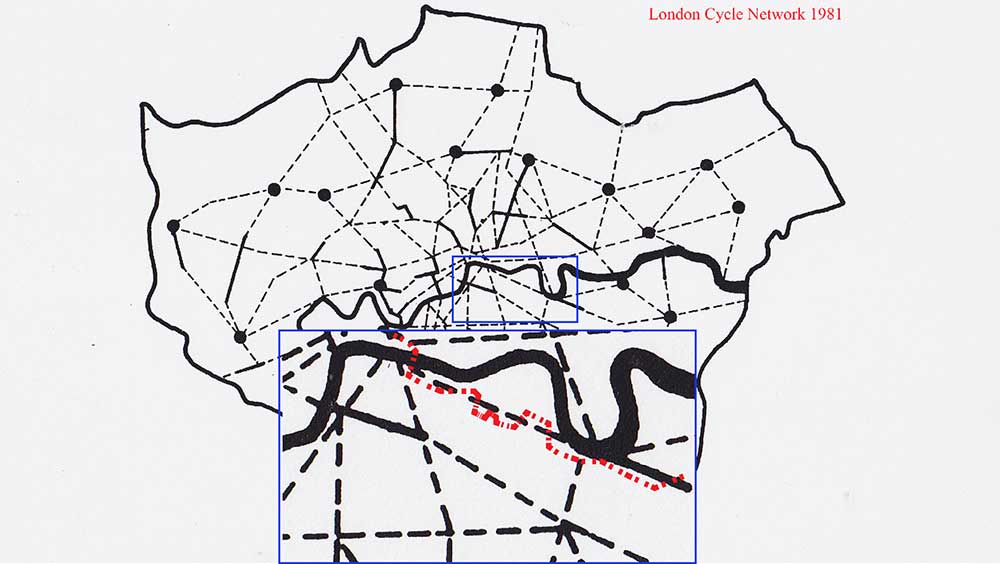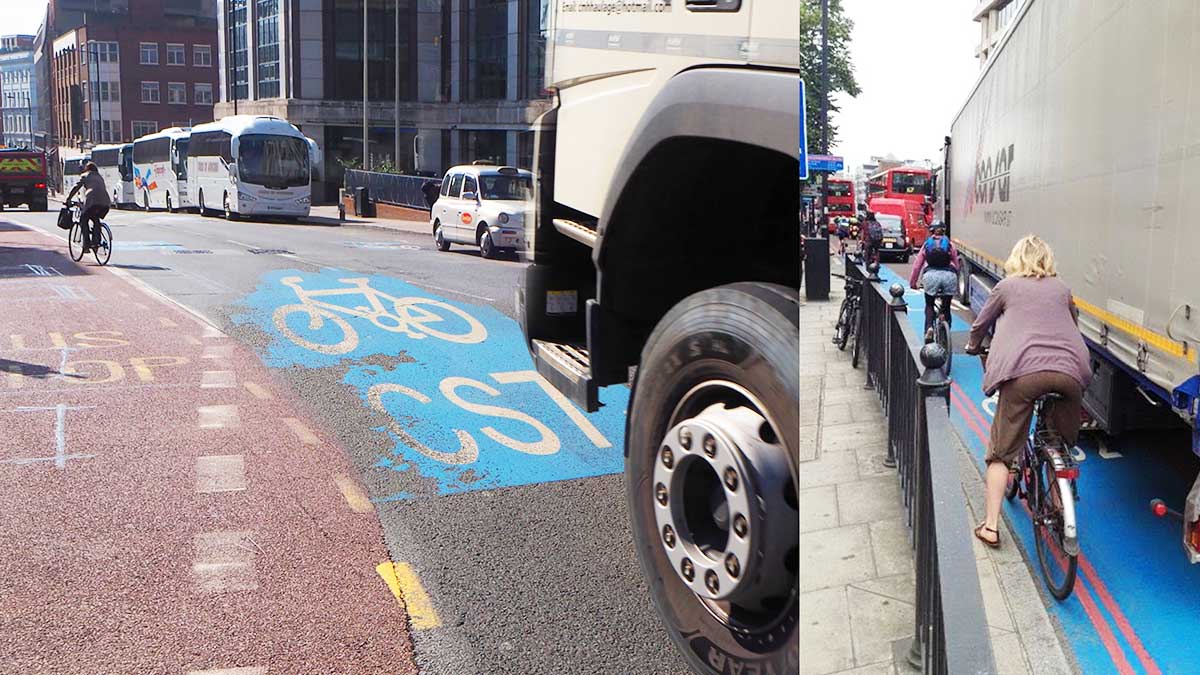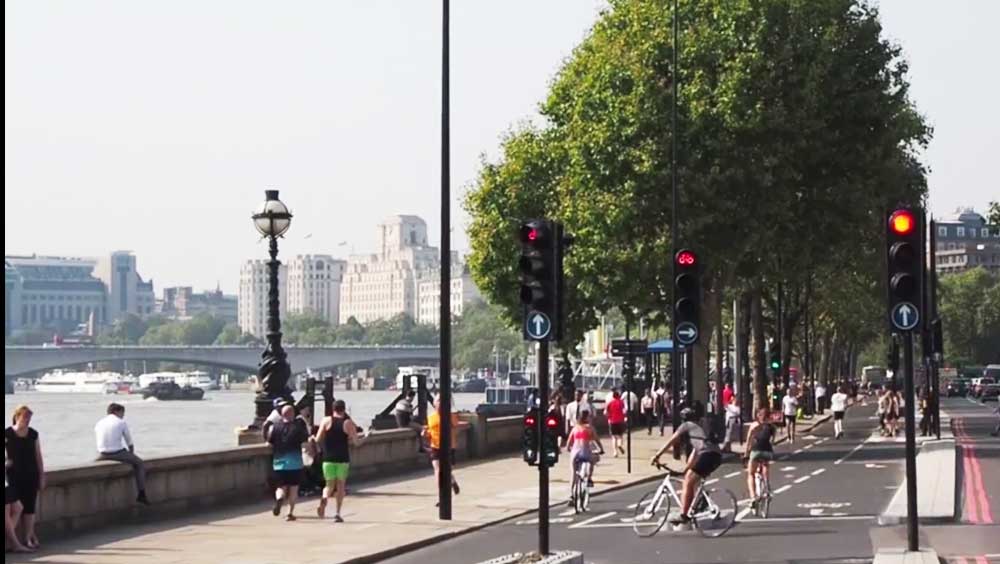The history of cycle network infrastructure planning in London
There have been three four main phases in London Cycle Network Planning
1930s: segregated cycle lanes beside new arterial roads
Leslie Hore-Belisha was an innovative Minister of Transport, remembered for introducing pedestrian crossings, a 30 MPH speed limit in built up areas and, in 1934, for opening London’s first segregated cycle track (as shown in the above video). Though intended to make cycling safe and convenient, the track was bitterly opposed by the Cyclists’ Touring Club. Its objection was that they might be restricted to cycle tracks and banned from riding on general roads. Apart from this folly, my impression is that the 1934 track, on the Western Avenue section of the A40 between Hanger Lane and Greenford Road, was not intensively used. Judging from what is now a shared cycle-pedestrian path, the problems are that it the adjoining road traffic is very heavy and that the track does not follow a desire line for green transport modes.
The principle of building cycle tracks where it was convenient to do so, rather than where they would be convenient to users, continued in the post-1946 New Towns, with cycle tracks built near distributor roads. When they attracted few users road engineers saw this as evidence that a ‘good’ road made cycling an obsolete transport mode. The real problem was that for most journeys cycling on the distributor roads was quicker and more convenient than cycling on the segregated tracks.
1980s: London Cycle Network, using signage and backstreets
London saw a fresh approach to bicycle transportation in the 1980s. It was supported by the London Cycling Campaign and Ken Livingstone (as Leader of the Greater London Council from 1981-86). The idea, which looked good on the plan, was to create links between London Borough town centres. It was called the London Cycle Network LCN) and the problems with it were:
- most of the links between town centres were recommended routes on backstreets and most of them were slower than cycling on main roads. Because they had more junctions they tended to be more dangerous than cycling on main roads
- some of the links were origin-to-destination desire lines. Most were not.
- the physical work of facilitating the recommended routes was signposting and, in places, painting white lines on roads. Neither the signs nor the painting was sufficient for cyclists to follow the routes
- the small expenditure on real cycle infrastructure went on advance stop lines and occasional facilities at road junctions
The London Cycle Network LCN survives as a name, an acronym and a paint job but finding a plan of the network on the web is almost impossible: the only drawing I have of it is the one I drew myself c1990.
I think of LCN as a fraud. With a few short exceptions, it was a network of suggested routes. It was not an infrastructure network of segregated/protected cycle lanes. Most of the ‘cycling facilities’ were signposts. London Cycle Network Route 2, for example, is a crazy idea for cycling from Greenwich to Westminster on backstreets. As well as being impossible to follow using the signposts, it is slower and more dangerous than doing the same journey on main roads, because the back streets have so many junctions.
On the diagram, below, the black lines show the ‘network’ and the red line shows the kind of route that was signposted on backstreets.

The principles of the London Cycle Network were also used for LCN+ and for the Quietway programme (which was better funded than its predecessors)
Phase 1 Cycle Superhighways
London’s first ‘blue paint’ cycle superhighway was opened in 2010. There were some segregated sections but most of the money went on painting blue cycle lanes on existing roads. They were not a bad thing but nor were they a good thing.

Phase 2 Cycle Superhighways
London’s first segregated cycle superhighway was opened in 2016 and was the city’s first immediately-popular example of high-quality, purpose-built cycle infrastructure. The East-West Cycle Superhighway was one of several Central London routes but was not part of a London-wide Cycle Network Plan.

Links
https://londonist.com/2014/08/when-londons-cylists-said-no-to-segregated-lanes
http://www.voleospeed.co.uk/2011/07/1934-moment-it-all-went-wrong-for.html
